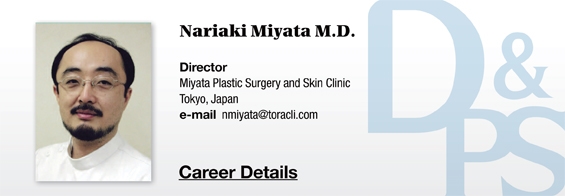
The Japan Society of Aesthetic Plastic Surgeons (JSAPS) Conference took place from September 22nd to 23rd 2015, in Yokohama.
The topic of the conference was ‘Maximum Change, Minimum Change.’ They compared various treatments and viewpoints focusing on invasive modalities with drastic outcomes and non-invasive modalities (device or injectables) with mild changes.
The conference included a symposium on ‘external anti-aging’ in which I participated as a speaker. This symposium focused on various methods used in sagging skin including energy-based devices, injectables, thread and surgery as well as their efficacy. The treatment outcome is the greatest with surgery but non-invasive methods are becoming popular and many members agreed that they are efficacious without the disadvantages of surgery. As JSAPS is a society of plastic surgeons and not dermatologists, all of the speakers were either plastic or cosmetic surgeons. I found it very refreshing that non-invasive treatments were given this much importance in this conference of surgeons.
Other than blepharoplasty, I perform few surgical facelifts. I offer surgery as one of the treatment options to patients but most cases do not desire drastic changes and prefer the non-invasive option. It is not that they want minimal improvement but just enough to go back to their daily living without being noticed for getting something done on their face. This attitude may be very different to that of Koreans. Japanese patients want treatments that do not require applying bandages or gauze afterwards. In other words, they will not choose treatments that cause bleeding or swelling. They seek aesthetic treatments for their own satisfaction, not for others to notice the improvement.
For these patients, I perform energy-based treatments. If they want a slightly more drastic improvement, I combine dermal filler injections or thread lift with a higher risk of subcutaneous bleeding or edema.
Japanese people are opposed to the idea of taking a scalpel to the skin and tend to only get invasive procedures with bleeding or swelling during their vacation. Again, Japanese patients do not like the idea of an incision and surgery is not a popular option of lifting. The global trend also favors the non-invasive methods in this regards, but it is particularly so in Japan.
Personally, Japanese patients are also hesitant about getting hyaluronic acid (HA) injections or thread lift. The number of these procedures is still very low, considering the population size.
[Advertisement] FCR® (Fractional Prickle CoralCalcium Regentron) – Manufacturer: (www.illglobal.com)]
In the previous article, I have mentioned that more doctors are trying these new procedures and more seminars are being held. These procedures are still performed less frequently compared to other countries. On the flip side of that, the Japanese market has a large growth potential. Therefore, the role of Korean manufacturers is expected to grow in this market in the future.
Japanese consumers prefer starting the treatment with mild energy-based treatments. Even if they are not fully satisfied with the outcome, they will not move onto a more invasive method, such as injectables, unless they have formed a trusting relationship with their doctors. Not just patients, but doctors also prefer being cautious. Dermatologist are generally busy with insurance-covered treatments and tend to start the aesthetic treatments with energy-based devices and then move onto the injectables. Only very few dermatologists with great passion for aesthetic medicine would try thread lift.
-To be continued




















